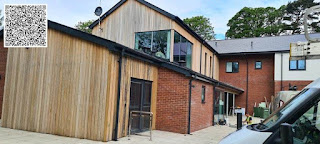How to lubricate garage door components
Your garage door is a vital part of your home's security and convenience. To ensure its smooth operation and longevity, regular maintenance, including lubrication, is essential. Lubricating the various components of your garage door not only reduces friction but also prevents wear and tear, ensuring quieter operation and extending the lifespan of the system. Here's a comprehensive guide to help you properly lubricate your garage door components:
1. Gather Your Supplies
Before starting, gather the necessary supplies:
Silicone-based or lithium-based garage door lubricant
Clean cloth or rag
Stepladder
Safety gloves and goggles
2. Inspect the Components
Examine the garage door components for signs of wear, rust, or damage. Look at hinges, rollers, springs, tracks, and pulleys. If any parts are damaged, consider professional repair or replacement.
3. Clean the Components
Use a clean cloth or rag to wipe away dirt, grime, and old lubricant from the components. Cleaning ensures the new lubricant can penetrate effectively.
4. Lubricate the Rollers
Apply a small amount of lubricant to the rollers, focusing on the ball bearings and the shaft. Rollers can either be nylon or metal, so ensure you use the appropriate lubricant: silicone-based for nylon rollers and lithium-based for metal rollers.
5. Lubricate the Hinges
Apply lubricant to the hinges where the sections of the garage door bend. Open and close the door to distribute the lubricant evenly.
6. Lubricate the Springs
Be cautious when lubricating the springs. Apply a light coating of lubricant to the springs, ensuring not to oversaturate them. Do not attempt to adjust or lubricate torsion springs; these should be handled by professionals due to their high tension.
7. Lubricate the Tracks
Apply a thin layer of lubricant to the tracks on both sides of the door. Wipe away any excess lubricant to prevent accumulation of dirt and debris.
8. Lubricate the Pulleys and Bearings
Apply lubricant to the pulleys and bearings at the sides of the door. Ensure the lubricant reaches the moving parts but avoid over-application.
9. Test the Door
Operate the garage door a few times to distribute the lubricant evenly across all components. Listen for any unusual noises that might indicate areas needing further attention.
10. Regular Maintenance
Make lubrication part of your garage door maintenance routine. Aim to lubricate the components every six months to a year, depending on usage and environmental conditions.
Safety Tips:
Wear safety gloves and goggles to protect your hands and eyes.
Use a sturdy stepladder or platform to reach higher components safely.
Avoid over-lubrication as it can attract dirt and debris, leading to potential issues.
By following these steps and performing regular maintenance, you can keep your garage door operating smoothly and extend its lifespan. If you encounter complex issues or are unsure about any maintenance procedures, it's always wise to seek professional help.
Remember, a well-maintained garage door not only enhances convenience but also contributes to the safety and security of your home.




Great guide on lubricating garage door components! Regular lubrication is crucial for maintaining smooth operation and preventing wear and tear. Regular maintenance will definitely extend the lifespan of the door.
ReplyDelete